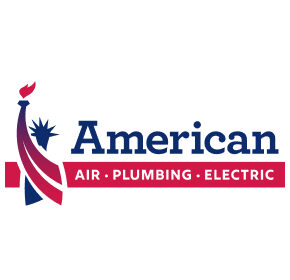Laundry rooms are often small compared to the other rooms in a home, but they generate a surprising amount of heat, moisture, and airborne lint. Without proper ventilation, that mix can quickly become a problem, especially in Florida’s humid environment. High indoor humidity, mold growth, musty odors, and even structural damage are all common side effects of an unventilated laundry space.
A few smart upgrades, such as exhaust fans, dehumidifiers, and energy recovery ventilators (ERVs), can make your laundry room more comfortable, more efficient, and a lot less risky for your home. As your local HVAC and indoor air quality expert, we’re diving into why ventilation is important for your laundry room, how Florida’s climate might be complicating the issue, and what you can do about it.
Why Laundry Room Ventilation Matters
Laundry rooms can pack a big punch in terms of humidity, heat, and air pollutants. Without proper airflow, those issues can spread through your home, impacting comfort and energy usage. Ventilation helps maintain balance. Here’s how:
- Controls excess moisture: Washers, dryers, and warm air create a humid environment that doesn’t dissipate on its own. That lingering moisture leads to mold, mildew, water stains, and warped surfaces.
- Improves indoor air quality: Laundry products like detergents and fabric softeners can release VOCs and other airborne pollutants. Ventilation keeps your air fresher by pushing those contaminants out.
- Reduces heat accumulation: Laundry rooms can get sweltering, especially when the dryer’s running. Without ventilation, that heat builds up and makes the rest of the house harder to cool.
- Prevents long-term damage: Constant exposure to humidity can peel paint, rust fixtures, and strain your appliances. Over time, it adds up to serious wear and tear.
Ventilation Solutions for Laundry Rooms
If your laundry room feels stuffy, sweaty, or smells like damp socks no matter how often you clean, it’s probably time to improve airflow. In severe cases, you might notice visible mold, mildew, or condensation on walls or windows.
These solutions can make a big difference:
Exhaust Fans
Exhaust fans are designed to pull moist, stale air from the laundry room and push it outside. They’re a must-have for reducing heat and humidity where washers and dryers work overtime. A properly installed exhaust fan prevents air from getting trapped and growing moldy inside walls or behind appliances. American Air, Plumbing, and Electrical offers professional installation to ensure fans are safely wired, vented, and compliant with building codes.
Dehumidifier Installation
Florida’s natural humidity doesn’t stop at the front door. Individual room and whole-home dehumidifiers work by pulling excess moisture from the air, helping your laundry room stay dry even on rainy days or during the height of summer. Dehumidifiers are especially helpful if your laundry room lacks windows or has poor circulation. They reduce the risk of mold, help protect your appliances, and ease the burden on your HVAC system.
Energy Recovery Ventilators (ERVs)
ERVs go a step further by improving whole-home ventilation while managing temperature and moisture. These systems bring in fresh outdoor air while removing stale indoor air, all while maintaining indoor humidity and comfort levels. And because they recover energy from outgoing air, they won’t spike your utility bills in the process.
ERVs are ideal for Florida homes that are tightly sealed for energy efficiency, but struggle with stale or humid air. American Air, Plumbing, and Electrical provides expert ERV installation to help improve airflow in your whole house, including the laundry room.
Special Considerations for Florida Homes
Living in Florida means battling heat and humidity year-round, which creates a unique set of ventilation challenges… especially for laundry rooms.
- High outdoor humidity levels: Moisture control is already tough in Florida. Without added ventilation, laundry rooms can become a breeding ground for mold and mildew.
- Heat and HVAC load: Hot laundry rooms make your HVAC system work harder to keep the rest of the home cool. Ventilation lightens that load and helps lower energy bills.
- Salt air in coastal areas: If you live near the beach, salty air can accelerate corrosion and sneak into unsealed spaces. Ventilation reduces the risk of rust and moisture intrusion.
Request Indoor Air Quality Solutions
Your laundry room might be one of the smallest spaces in your home, but it can have a big impact on your air quality, energy bills, and long-term comfort. Whether it’s an exhaust fan, dehumidifier, or ERV, upgrading your ventilation is one of the smartest ways to protect your home and health.
The team at American Air, Plumbing, and Electrical offers customized indoor air quality solutions tailored to Florida’s climate and your household needs. With certified technicians, upfront pricing, and expert installations, we can help you improve the airflow in your laundry room for fresher, cleaner air throughout your home.
Ready to improve your laundry room ventilation? Contact the team at American Air, Plumbing, and Electrical today to schedule an indoor air quality assessment.


